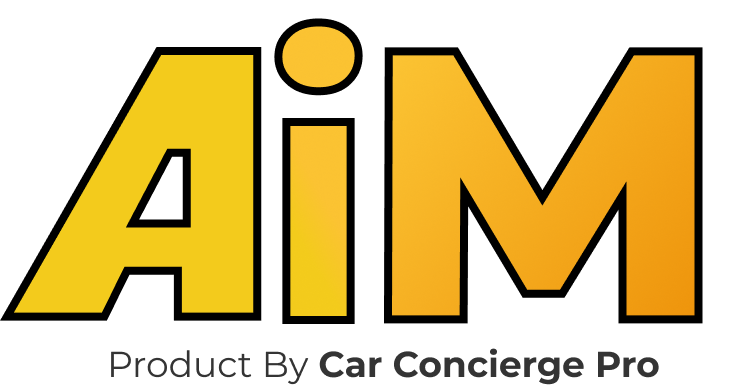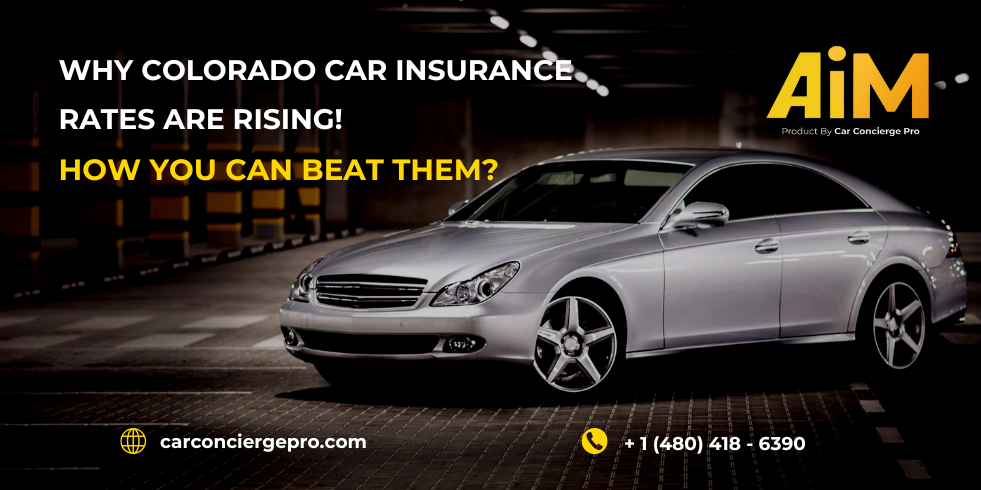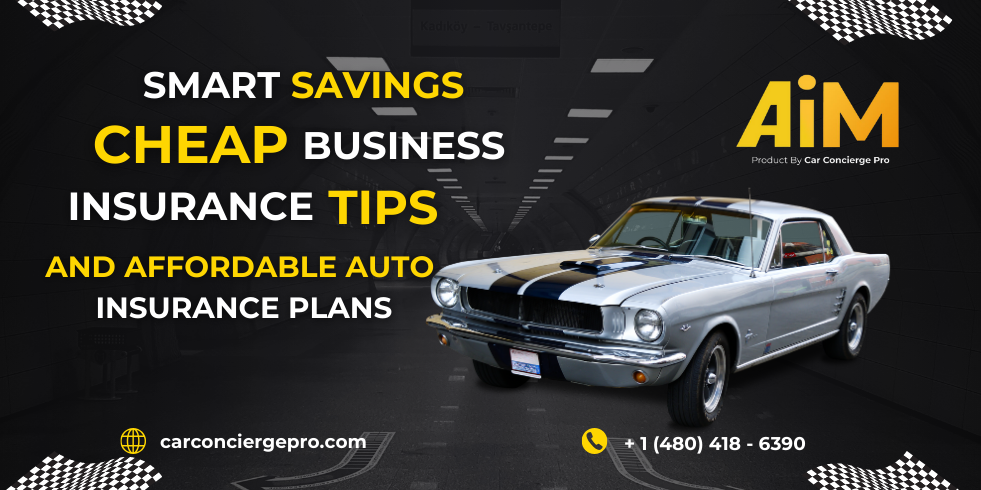Finding affordable car insurance in Las Vegas can be a daunting task, given the city’s unique driving conditions, higher-than-average accident rates, and population density. However, with the right strategies, you can secure significant savings without compromising on coverage. In this comprehensive guide, we’ll explore data-driven insights, insider tips, and how Car Concierge Pro and AiM services can streamline your car insurance experience.
Table of Contents
Key Factors Driving High Car Insurance Rates in Las Vegas
1. Accident Frequency
The high rate of accidents in Las Vegas is a primary factor influencing insurance premiums. Data from the National Highway Traffic Safety Administration (NHTSA) shows that Nevada has a crash rate of 11.7 accidents per 1,000 residents, significantly higher than the national average of 9.8.
Some of the reasons behind this include:
- Distracted driving: Reports indicate that distracted driving accounts for nearly 25% of accidents in Nevada.
- Alcohol-related incidents: Las Vegas’s party culture often leads to a higher incidence of drunk driving. The state has a DUI arrest rate of 3.8 per 1,000 drivers, compared to the national average of 2.8.
- Intersection hotspots: The city’s grid-like layout results in numerous high-risk intersections, such as Flamingo Road and Las Vegas Boulevard, which are notorious for frequent collisions.
2. Vehicle Theft
Las Vegas’ elevated rate of vehicle theft also contributes to higher insurance premiums. The FBI’s Uniform Crime Reporting Program reveals that Las Vegas’s vehicle theft rate is 405 per 100,000 residents, nearly double the national average of 246. Auto theft drives up comprehensive insurance costs, as insurers must account for the heightened risk.
To mitigate this:
- Install anti-theft devices: Cars equipped with GPS trackers and alarm systems may qualify for insurance discounts.
- Park securely: Opt for well-lit, monitored parking areas to reduce theft risk.
3. Tourism and Road Congestion
Las Vegas attracts nearly 40 million tourists annually. While this influx boosts the local economy, it creates substantial challenges for traffic management. Data from the Las Vegas Convention and Visitors Authority (LVCVA) highlights that:
- Visitors contribute to over 30% of daily traffic on major roads.
- Congestion during peak times increases the likelihood of fender benders and more severe accidents.
The constant flow of rental cars, rideshare drivers, and out-of-town visitors unfamiliar with local traffic patterns compounds the issue. This dynamic pushes insurance rates higher as claims from accidents involving tourists add up.
4. Weather and Road Conditions
While Las Vegas enjoys sunny weather most of the year, occasional flash floods and extreme heat can lead to hazardous driving conditions. For instance:
- Flood risks: Heavy rains can overwhelm drainage systems, causing sudden flooding on city streets. This leads to costly claims for water-damaged vehicles.
- Heat damage: Extreme summer temperatures, often exceeding 110°F, can lead to tire blowouts and mechanical failures, resulting in accidents.
5. Litigation Costs and Insurance Fraud
Nevada’s legal climate is another factor driving up premiums. The state has a reputation for high litigation costs associated with car accident claims. Additionally, fraudulent claims, such as staged accidents, are more common in urban areas like Las Vegas. These fraudulent activities increase overall costs for insurers, which they pass on to policyholders.
While the factors mentioned above are largely beyond individual control, there are steps drivers can take to reduce their insurance costs:
- Shop Around
- Compare quotes from multiple insurance providers to find the best rate. Insurers weigh risk factors differently, so premiums can vary significantly.
- Bundle Policies
- Many insurers offer discounts when you bundle car insurance with home, renters, or other types of coverage.
- Improve Your Driving Record
- Avoid traffic violations and accidents to qualify for safe driver discounts.
- Choose a Higher Deductible
- Opting for a higher deductible can lower your monthly premium. However, ensure you have sufficient savings to cover the deductible in case of a claim.
- Utilize Discounts
- Look for discounts based on factors such as:
- Good grades (for students)
- Completion of defensive driving courses
- Membership in professional organizations
- Look for discounts based on factors such as:
- Reduce Coverage on Older Vehicles
- For older cars with lower market value, consider dropping comprehensive and collision coverage to save on premiums.
Car insurance in Las Vegas is undeniably expensive, but understanding the reasons behind these high costs can empower drivers to make informed decisions. Factors such as accident rates, vehicle theft, tourism-related congestion, and weather challenges all contribute to the city’s elevated premiums. By leveraging discounts, maintaining a clean driving record, and choosing the right coverage options, residents can take control of their insurance expenses.
Data-driven insights highlight the importance of being proactive. For instance, a study by the Nevada Department of Transportation found that defensive driving courses can reduce accident risk by 20%, potentially leading to substantial insurance savings. Similarly, installing anti-theft devices can lower comprehensive coverage costs by up to 15%, according to the Insurance Information Institute.
In a city as dynamic and fast-paced as Las Vegas, navigating the insurance landscape requires careful planning. By staying informed and adopting cost-saving strategies, you can mitigate the financial burden of high premiums while ensuring adequate coverage for life on the road.
Top Ways to Save on Car Insurance in Las Vegas
Car insurance is a significant expense for Las Vegas drivers, where premiums are higher than the national average due to factors like heavy traffic, accident rates, and vehicle theft. Fortunately, there are actionable strategies to help you reduce your insurance costs without sacrificing essential coverage. Below, we outline the top methods to save, supported by data and expert insights to guide your decisions.
1. Shop Around for the Best Rates
Comparison shopping is one of the most effective ways to lower your car insurance premiums. Insurers evaluate risk factors differently, leading to significant variations in quotes. According to the Insurance Information Institute (III), drivers who compare multiple quotes can save up to $1,000 annually for the same coverage.
- Example: A Las Vegas driver might receive quotes ranging from $1,800 to $3,000 per year for identical policy terms. Using tools like AiM’s insurance comparison service streamlines this process, presenting tailored options to meet your needs.
- Pro Tip: Check quotes every six months or after major life changes, such as moving or buying a new car, as these can influence rates.
2. Bundle Policies
Combining your car insurance with other types of coverage—such as homeowners or renters insurance—can lead to substantial savings. Many insurers offer discounts of up to 25% for bundling multiple policies under one provider.
- Statistics: According to a J.D. Power study, nearly 70% of policyholders who bundled their insurance reported satisfaction with the cost savings.
- Scenario: A Las Vegas homeowner paying $1,200 for home insurance and $2,400 for car insurance separately could save up to $900 annually by bundling the two policies.
3. Maintain a Clean Driving Record
Your driving history plays a critical role in determining your insurance premiums. Drivers with no accidents or traffic violations typically pay 25-30% less than those with blemished records.
- Data Insight: The Nevada Department of Transportation reports that the average cost of an at-fault accident claim is approximately $3,231, not including potential premium hikes that can last for three to five years.
- Savings Potential: Avoiding a single speeding ticket, which can increase premiums by 20%, could save a Las Vegas driver $500 annually.
4. Increase Your Deductible
Raising your deductible—the amount you pay out-of-pocket before insurance covers the rest—can lower your monthly premium significantly. For example:
- Moving from a $500 deductible to $1,000 can reduce your premium by 10-20%.
- Case Study: A Las Vegas driver paying $2,400 annually could save $240 to $480 per year by increasing their deductible.
This strategy is best suited for drivers who have sufficient savings to cover higher upfront costs in the event of a claim.
5. Leverage Discounts
Most insurance companies offer a range of discounts that can substantially reduce your premiums. Here are some of the most common discounts to consider:
- Good Driver Discount: Save up to 15% if you maintain a clean driving record for three or more years.
- Low Mileage Discount: Drivers who travel fewer than 7,500 miles annually can qualify for reduced rates. According to AAA, Las Vegas residents who drive less often can save $150 to $300 annually.
- Student Discount: Young drivers with good grades (e.g., a B average or higher) can save an average of 10-20%. For a teenage driver with a $3,000 premium, this equates to savings of $300 to $600 per year.
- Vehicle Safety Features: Cars equipped with anti-theft devices, airbags, and electronic stability control often qualify for discounts of up to 10%.
6. Take Advantage of Defensive Driving Courses
Completing a defensive driving course can lower your insurance premiums while improving your skills behind the wheel. Many insurers offer discounts of 5-10% upon course completion.
- Fact: The Nevada DMV-approved courses cost around $40 and can lead to annual savings of $100 to $200.
- Bonus: Defensive driving courses can also help remove points from your driving record, preventing premium increases from minor violations.
7. Optimize Your Coverage
Reassessing your coverage needs can help you avoid paying for unnecessary extras. Consider the following:
- Reduce Coverage on Older Vehicles: If your car’s market value is low (e.g., under $5,000), dropping comprehensive and collision coverage could save you $300 to $600 annually.
- Evaluate Optional Add-Ons: Extras like roadside assistance and rental car reimbursement may not be necessary if you already have similar coverage through other providers, such as AAA or credit card benefits.
8. Improve Your Credit Score
In Nevada, insurers use credit scores as a factor when calculating premiums. A higher credit score indicates financial responsibility, often leading to lower rates.
- Statistic: Drivers with excellent credit scores (800+) pay an average of $1,000 less per year compared to those with poor scores (below 600).
- Action Plan: Pay bills on time, reduce outstanding debts, and check your credit report for errors to boost your score.
9. Consider Usage-Based Insurance (UBI)
Usage-based insurance programs, such as Progressive’s Snapshot or State Farm’s Drive Safe & Save, track your driving habits via a mobile app or device. Safe drivers can earn discounts of up to 30%.
- Example: A Las Vegas driver enrolled in UBI who demonstrates consistent safe driving could save $720 annually on a $2,400 policy.
- Caution: UBI may not be ideal for those with irregular or aggressive driving habits, as it could lead to premium increases.
10. Regularly Review and Update Your Policy
Life changes, such as moving, changing jobs, or paying off a vehicle loan, can affect your insurance needs and eligibility for discounts. Regularly reviewing your policy ensures you’re not overpaying.
- Example: Moving to a ZIP code with lower accident rates could reduce premiums by 10-15%.
- Tip: Set a reminder to review your policy annually or after major life events.
Understanding Nevada’s Minimum Insurance Requirements
Before shopping for car insurance, it’s essential to understand Nevada’s state-mandated requirements. Meeting these legal obligations ensures you can drive without penalties, but knowing the details can also help you determine whether additional coverage is necessary to protect against unexpected expenses.
Nevada’s Minimum Liability Coverage Requirements
Nevada law mandates that drivers carry at least the following liability coverage:
- $25,000 for bodily injury per person involved in an accident.
- $50,000 for bodily injury per accident, regardless of the number of individuals injured.
- $20,000 for property damage caused by the accident.
These limits are often abbreviated as 25/50/20. While they fulfill the legal minimum, they may not provide sufficient financial protection in serious accidents.
Why Minimum Coverage May Not Be Enough
Nevada’s minimum insurance requirements are designed to provide a basic safety net, but they may leave you vulnerable to significant financial losses in certain scenarios. For instance:
- Medical Costs: According to the CDC, the average cost of a hospital stay following a motor vehicle accident in the U.S. is approximately $57,000. The $25,000 per-person bodily injury limit might cover less than half of this amount.
- Property Damage: The $20,000 property damage limit could fall short if you are responsible for damaging a high-value vehicle or multiple cars in a multi-vehicle collision. The average new car price in the U.S. is over $48,000 as of 2023.
- Legal Costs: In Nevada, at-fault drivers can be sued for damages exceeding their insurance coverage. This means you could be personally responsible for the remaining costs, potentially jeopardizing your savings and assets.
Recommended Coverage Levels
To better protect yourself financially, consider purchasing higher liability limits, such as 50/100/50 or 100/300/100. Many experts recommend these levels to ensure sufficient coverage for:
- Medical expenses: Higher limits provide more room to cover escalating healthcare costs.
- Severe accidents: Larger coverage cushions against potential lawsuits and out-of-pocket expenses.
Additional Coverage Options to Consider
Beyond liability insurance, Nevada drivers may want to explore additional coverage options to safeguard against other risks:
- Comprehensive and Collision Coverage:
- Comprehensive covers non-collision-related damages, such as theft, vandalism, and natural disasters.
- Collision covers damages to your vehicle from collisions with other cars or objects.
- Cost Insight: In Nevada, the average annual premium for full coverage, including comprehensive and collision, is approximately $1,802 compared to the state’s average minimum coverage premium of $924.
- Uninsured/Underinsured Motorist Coverage (UM/UIM):
- This coverage protects you if you’re involved in an accident with a driver who has insufficient or no insurance. According to the Insurance Research Council, 12.4% of Nevada drivers are uninsured, making UM/UIM coverage a critical consideration.
- Medical Payments (MedPay):
- Covers medical expenses for you and your passengers, regardless of fault. Typical limits range from $1,000 to $10,000.
- Gap Insurance:
- Ideal for those with financed or leased vehicles. Gap insurance covers the difference between your car’s depreciated value and the amount you owe on your loan if your car is totaled.
- Example: If your vehicle’s market value is $15,000, but you owe $18,000 on your loan, gap insurance covers the $3,000 shortfall.
- Roadside Assistance:
- Provides support for breakdowns, towing, and other emergencies. Often costs less than $20 per year when added to an insurance policy.
Penalties for Non-Compliance
Failing to carry the required insurance in Nevada can result in severe consequences:
- Fines: Ranging from $250 to $1,000, depending on the duration of the lapse.
- License Suspension: The Nevada DMV may suspend your driver’s license and vehicle registration until you provide proof of insurance.
- Reinstatement Fees: Additional costs include fees to reinstate your license and SR-22 filings, which can increase premiums by 40-60%.
- Vehicle Impoundment: In extreme cases, law enforcement may impound your vehicle, leading to towing and storage fees.
How to Ensure Compliance
To stay compliant and avoid penalties, follow these tips:
- Automate Payments: Set up automatic payments for your insurance premiums to prevent unintentional lapses.
- Regularly Review Your Policy: Ensure your coverage meets state requirements and reflects any life changes, such as purchasing a new car.
- Carry Proof of Insurance: Always keep your insurance ID card in your vehicle. Nevada law requires drivers to provide proof of insurance during traffic stops or accidents.
How Car Concierge Pro Simplifies Your Insurance Search
Navigating the complexities of car insurance can be overwhelming, but Car Concierge Pro specializes in making it simple. Here’s how:
- Tailored solutions: By analyzing your driving habits, budget, and insurance needs, Car Concierge Pro identifies the most cost-effective policies.
- Negotiation expertise: With insider knowledge, they negotiate better terms and rates on your behalf.
- Time savings: They handle the tedious process of comparison shopping and paperwork, allowing you to focus on what matters.
The Role of AiM Services in Securing Affordable Coverage
AiM services use advanced AI technology to streamline the insurance shopping process. Here’s what sets them apart:
- Data-driven recommendations: AiM analyzes millions of policies to find the best match for your profile.
- Real-time updates: Stay informed about rate changes and new discounts in Las Vegas.
- User-friendly interface: Compare policies, customize coverage, and get instant quotes all in one place.
By combining Car Concierge Pro and AiM services, you gain access to unparalleled expertise and cutting-edge tools, ensuring you never overpay for car insurance.
Tips for Choosing the Right Coverage in Las Vegas
Evaluate Your Driving Habits
If you commute daily or frequently travel on busy highways like I-15, consider comprehensive coverage. For occasional drivers, liability coverage might suffice.
Consider Your Vehicle
The make and model of your car significantly influence your premium. For instance:
- Luxury vehicles: Typically cost 20-40% more to insure due to expensive repairs.
- Older cars: May only need liability coverage if the vehicle’s value is below $5,000.
Don’t Overlook Add-Ons
Enhancements like roadside assistance and uninsured motorist coverage are worth considering, especially in high-risk areas like Las Vegas.
Real-Life Savings Examples
To illustrate the potential savings, here are examples of drivers who reduced their premiums with Car Concierge Pro and AiM services:
- Maria S.: Saved $720 annually by bundling her home and auto insurance.
- James L.: Lowered his premium by 30% after switching to a provider recommended by AiM.
Lisa T.: Avoided overpaying by leveraging a low-mileage discount identified by Car Concierge Pro.
FAQs About Las Vegas Car Insurance
What is the best way to lower my premium?
Shopping around and leveraging tools like AiM can uncover significant discounts. Additionally, maintaining a clean driving record and bundling policies are effective strategies.
How does my credit score affect car insurance rates in Las Vegas?
In Nevada, insurers can use your credit score to determine rates. Drivers with excellent credit often pay 20-25% less than those with poor credit.
Should I opt for minimum coverage or full coverage?
While minimum coverage meets legal requirements, full coverage is advisable for newer vehicles or high-risk drivers to avoid financial strain in case of an accident.



